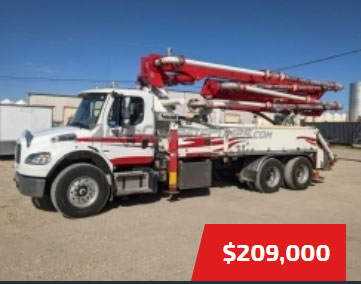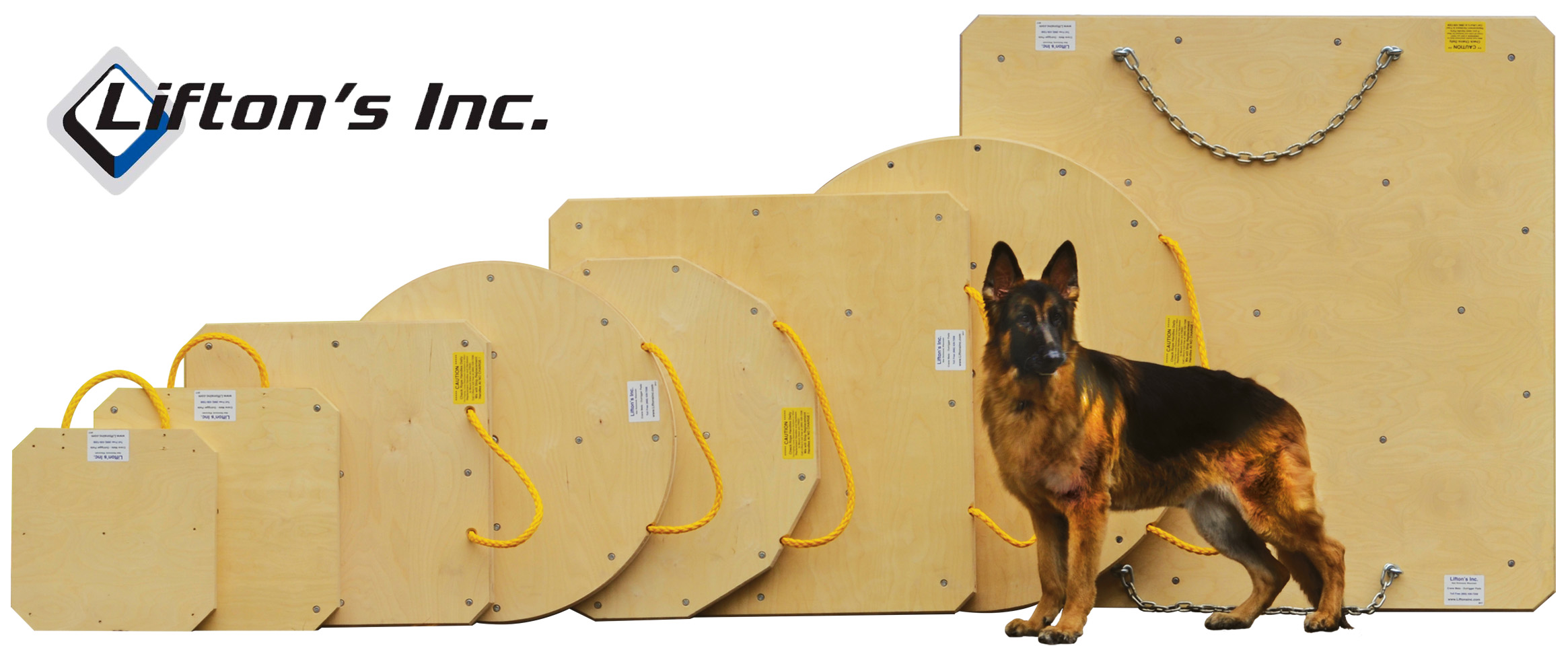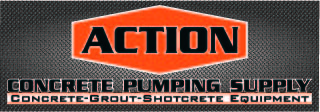| Bob | 04-21-2008 | comment profile send pm notify |
|
Hose whipping is not a new issue. It has been with us since the early days of pumping. There have been changes both from within and from outside the industry that have brought this issue to the forefront. The internal changes have been the improvement of the pumping equipment. Modern concrete pumps are far superior to the early models. Today’s machines have a much higher piston face pressure as well as a much higher volume potential. These two attributes, when combined with air within a boom system, increase the potential and severity of an explosive discharge of material and expanding air. Given the presence of a flexible tip hose and we have a potential for disaster. The change from outside our industry that has been a catalyst to our looking for a way to end hose whipping is the familiarity of plaintiff’s attorneys with the event and the inevitable litigation. We need to stop hose whipping accidents. Hundreds of thousands of dollars are spent trying to stop hose whipping occurrences and subsequent accidents. What is it we, as an industry are doing to reach this goal? First and foremost we need to properly inform our co-workers of this dangerous potential. The ACPA has printed co-worker warning material; video and DVD training and information presentations are available. The concrete pumping industry could have a safety awareness month. Every pumping company, as well as the ACPA, could, during that month, distribute material to our co-workers. This could be accomplished by mass mailing, emailing, company to company exchange, salesmen to superintendents, operator to placing crew, and meetings between safety professionals. An all out one month every day push, push, push to insure that every person from the president of a construction company to the guy on the end of every hose on every job has been made aware of the potential dangers that may confront him on a pump job. Concrete pump operators must be given specific training on what, why and how hose whipping happens and the necessary measures to prevent that happening and proper guidance on keeping that potential away from his co-workers. Hose whipping is the reactive motion of the discharge hose to the expulsion of the expanding air. Whipping is a very good description of the event. How do we prevent this whipping motion? That is the question. If you have ever seen this event you will remember it; for it is terrifying. A regular tip hose will whip. A regular tip hose with a fitting on the discharge end will whip. The coupling on the discharge end of the hose adds mass to the equation. That mass creates a larger hazard to all co-workers and should not ever be present in the situation of a hanging hose from the end of a boom. It serves no purpose and its only potential is to create damage. There is no reason for any pump to have a fitting on the discharge end of the tip hose. No reason. The 5 minutes that it takes to exchange the two ended hose for one with out a fitting is well spent in every case. It is not an imposition to change to the one ended hose, it is an obligation. At the time of this writing, there are industry people working on the development of a “non whipping†tip hose. There is also a company selling a device to strap over your existing hose to make it more rigid. Both of these efforts should be applauded. These are meaningful measures. They are done with the best intent. The answer to what is the best method will be determined by the people that use these and other devices. The answer will be welcomed by our industry. We need to safeguard our co-workers. I can conceive of a day that no one ever will be injured. Concrete construction is dangerous work. We must all approach our day with the idea that each of us will do whatever we can to make that day a safe one. Every day that you work injury free is proof that it is possible. If you have no accidents today; why is it not possible to repeat that tomorrow? The current production concrete pumps are some of the safest pieces of construction equipment on any job site. The information available from our industry association is as good as, or better than any industry. Safety, like everything else in a company starts at the top. If the person/people that own and run your company really believe that it is possible to work safely every day, it will happen. Safety is everyone’s job 1… that is you. ;~) |
||
| Todd | 04-21-2008 | reply profile send pm notify |
|
Very nice. |
||
| SUPERDOFFER | 04-21-2008 | reply profile send pm notify |
|
my question is wy are most of you are reduse to a 4 inch tip hose. we only use 5 inch and that means almost al the air is past the concreet befor it leafs the tiphose |
||
| ftworth58 | 04-21-2008 | reply profile send pm notify |
|
In our yard every truck is required to come back in the yard with the single ended hose on it, no excuses or it is a write up. The only time we use a double ended hose is to hook up to system,once you disconnect from that if your hose is in the air you better change to a single ended,if caught running a double its grounds for termination.Company policy. |
||
| Bob | 04-21-2008 | reply profile send pm notify |
|
Someone is telling you stories. |
||
| Mudslinger | 04-21-2008 | reply profile send pm notify |
|
SD: the reason I use 4" is to not trash everyone and everything in the job!! A little caution is part of the job! And I dont plug up very often. You have to REALLY TRY to get a 4" hose to whip,and if I'm gonna be pumping that fast,I'll switch to a reducing hose! Either way it's one ended!! |
||
| ruck | 04-21-2008 | reply profile send pm notify |
|
I like my 5 to 3 hose.it works great. Just pump alittle slower and it goes fine. Ruck |
||
| bisley57 | 04-21-2008 | reply profile send pm notify |
|
Excellent point Bob,I find the only people that are aware of hose whipping is a person who has been whipped.I still find experienced hose men who like to hang-out by the hose when priming out and restarting.We as operators can do everything possible to prevent a mishap,but they still happen,today I pulled a tennis shoe and a 4"x4" piece of plate steel off my grating,I get lucky sometimes.I wasnt so lucky with the 18 " pipe wrench............ |
||
| Bob | 04-22-2008 | reply profile send pm notify |
|
For those of you that would like to do something positive about stopping hose whipping incidents but don’t have, or can’t afford the special hose; I have a proven solution for you. What are we looking for here? A hose with these characteristics:
Off of your tip 90 hang a 3 or 4 foot steel braid hose. Off of the end of that hose hang an old, but serviceable piece of boom pipe. Remember………. 2 pieces = 2 safety straps You can wrap the pipe in foam insulation, or pad it as you see fit. Your hose man will love it because it is easy to push around and will not ‘drape’ over his shoulder if he tries one of those “hero†pushes for that little bit, way over there. Give this program a fair shake and you will never use another hose on your tip. |
||
| Todd | 04-22-2008 | reply profile send pm notify |
|
Here is the Putzmeister video of hose whipping, now i hate to post stuff from companies that are not our sponsors but I believe its important for everyone to see this video. http://video.concretepumping.com/view_video.php?viewkey=8416a242f40fb7d7f338 Another guy here in the |
||
| bisley57 | 04-22-2008 | reply profile send pm notify |
|
Bob,can we do that in 4"?OK,a short stout hose,and a piece of pipe how long?If you don't mind have you seen this layout in action?It sounds real good. |
||
| Bob | 04-22-2008 | reply profile send pm notify |
|
I must say that i don't know. I do know that if you go about this wrong, you are creating a man killing machine. The hose ( 3 or 4 ) feet long is overall length. Not 5 ft or 6 ft or whatever. It is only long enough so that your hose man has the ability to move the pipe around. It would help remind everyone of the danger if ALL TIP HOSES WERE SAFETY ORANGE |
||
| OldSchool2 | 04-23-2008 | reply profile send pm notify |
|
bob safety orange is agood idea . the putz anti whip hose is the only way to go just ask bullfrog. |
||
| Safety Mike | 04-28-2008 | reply profile send pm notify |
|
Pochin Concrete Pumping (UK) were main trial and development partners with Putzmeister in bringing the Steady Hose (SH) to the industry. Every POCHIN pump (+130) now carries a SH, and feedback from operators, has been encouraging - incidents of uncontrolled after blockage 'whipping' have virtually ceased. Laying gangs like then too - they are a lot lighter to push around..... |
||
| Bob | 04-28-2008 | reply profile send pm notify |
|
They are easier to push around because they are not as flexable as a placing hose. Nothing is worse than three guys trying to push the hose out for that one corner that you can't quite reach. It isn't the weight; it is the flex. I guess my one real problem is this: Why in the hell would you spend more money than necessary? A pipe with a removeable cushion/cover will do all of the above. And you can buy the closed cell foam in BRIGHT SAFETY COLORS. But whatever way that you go..... please do go SAFELY |
||
| pudg | 07-08-2008 | reply profile send pm notify |
|
Mudslinger, No disrespect,but that comment if your pumping fast you put on a reduction hose is idiotic and irresponsible.The last thing you want to be doing is pumping wide open thru a reduction hose your asking for trouble, keep your reductions in a steel reducer not in rubber your asking for a hose whipping accident,and if they dont want to get a little concrete on them maybe they should look for another profession, if it was easy women and children would do it! |
||

_1.png)


















.jpg)
.gif)

.jpg)









.jpg)








